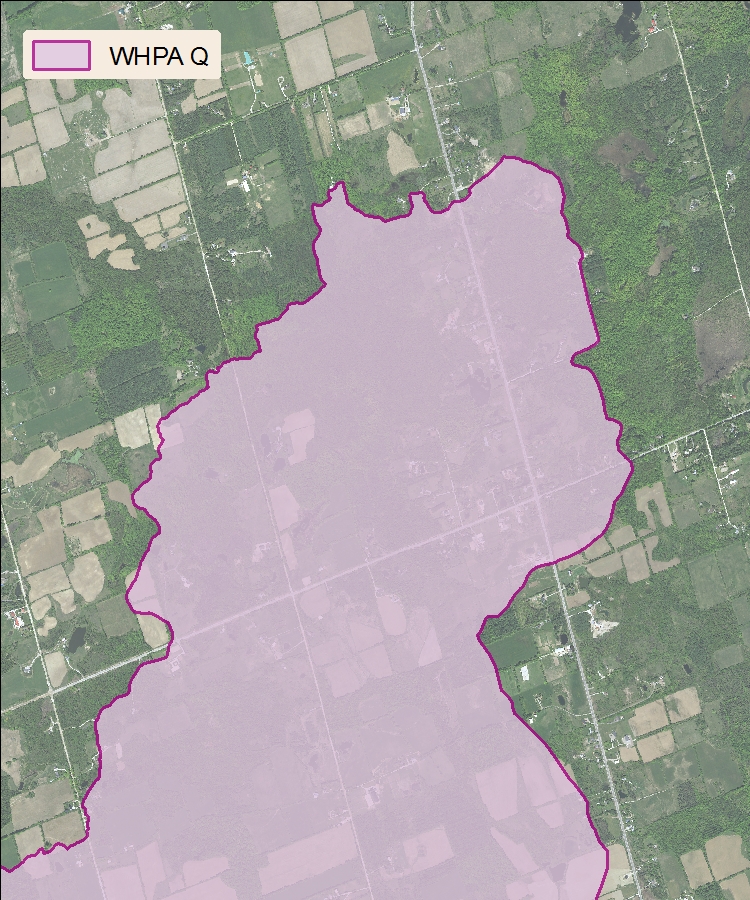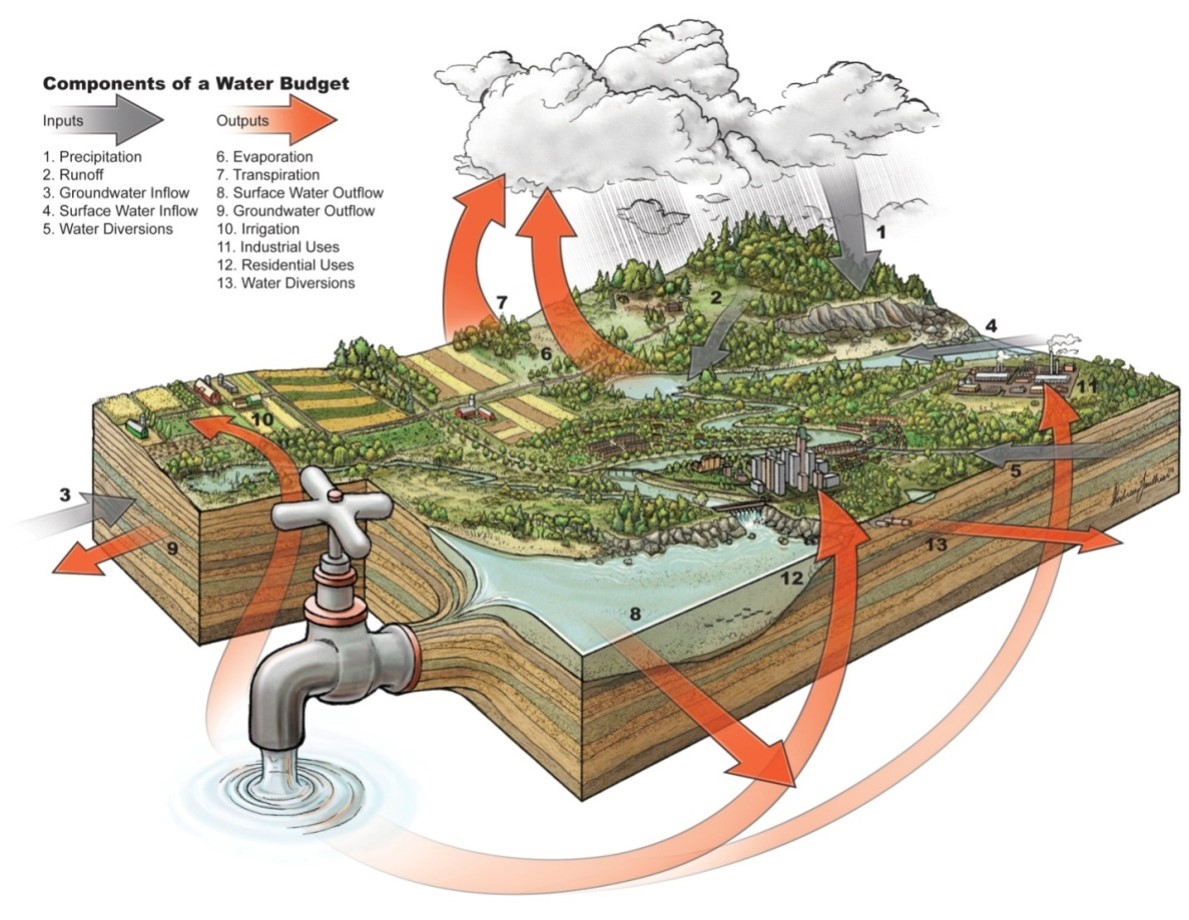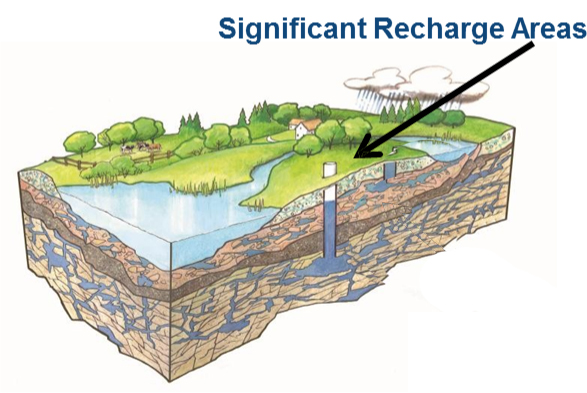Contact(s)
Water Quantity
Source water protection is not just about quality of water, it seeks to protect the quantity of municipal drinking water to ensure that everyone has drinking water for years to come.
Quantity Wellhead Protection Areas (WHPA Q)
A wellhead is the physical structure of the well above ground. A wellhead protection area is the area around the wellhead where land use activities have the potential to affect the quantity of water that flows into the well.
WHPA Q1- Refers to the area where activities that take water without returning it to the same source may be a threat
WHPA Q2- refers to the area where activities that reduce recharge may be a threat.

Not all Source Protection Plans have WHPA Qs delineated. Water quantity vulnerability is determined differently than other vulnerable areas. All Source Protection Areas initially completed either a Tier 1 (watershed) or a Tier 2 (subwatershed) water budget study for the entire watershed. Out of the Tier 2 studies, each Source Protection Area identified subwatersheds that had a 'moderate' or 'significant' potential for experiencing stresses related to water takings. In these areas, a Tier 3 Water Budget Study is conducted to further determine the risk to drinking water quantity.

A water budget, similarly to a household budget, measures the amount water that is entering, stored within and leaving a watershed.
In Wellington County, there are Tier 3 water budget studies that are in various process stages in the Townships of Centre Wellington, Guelph Eramosa, Puslinch and the Town of Erin. For more information visit our Tier 3 Water Budget Study page.
To learn more about how you can protect the quantity of water in our aquifers visit our residential or commercial/industry pages.
Significant recharge areas (SRAs)
A recharge area is the land area where rain and snow seep underground into an aquifer. A significant recharge area is one that helps to maintain the water level in an aquifer that supplies a community with drinking water. Recharge can be impacted by the creation of non-permeable surfaces such as paving areas for parking lots or building larger structures that don't encourage infiltration of water back into the aquifer.



 Centre Wellington Township
Centre Wellington Township Guelph/Eramosa Township
Guelph/Eramosa Township Mapleton Township
Mapleton Township Township of Puslinch
Township of Puslinch The Township of Wellington North
The Township of Wellington North Town of Minto
Town of Minto County of Wellington
County of Wellington Town of Erin
Town of Erin







